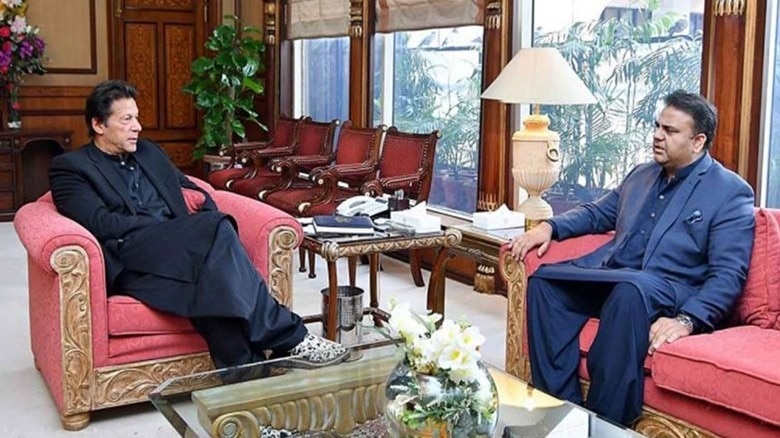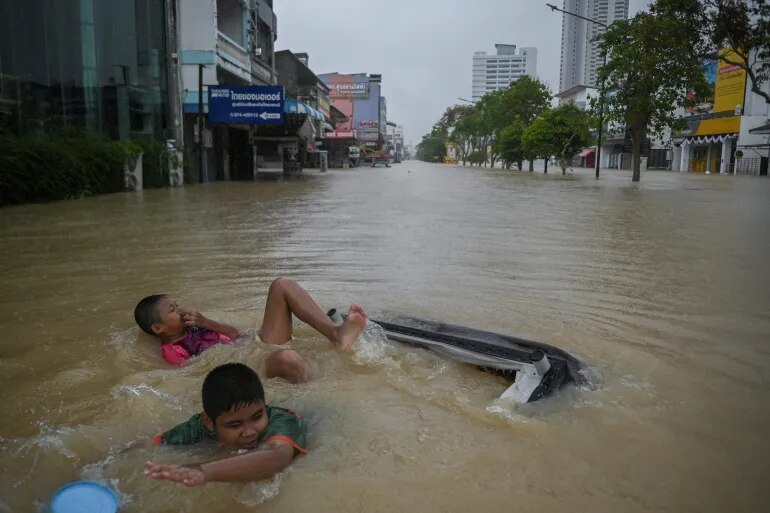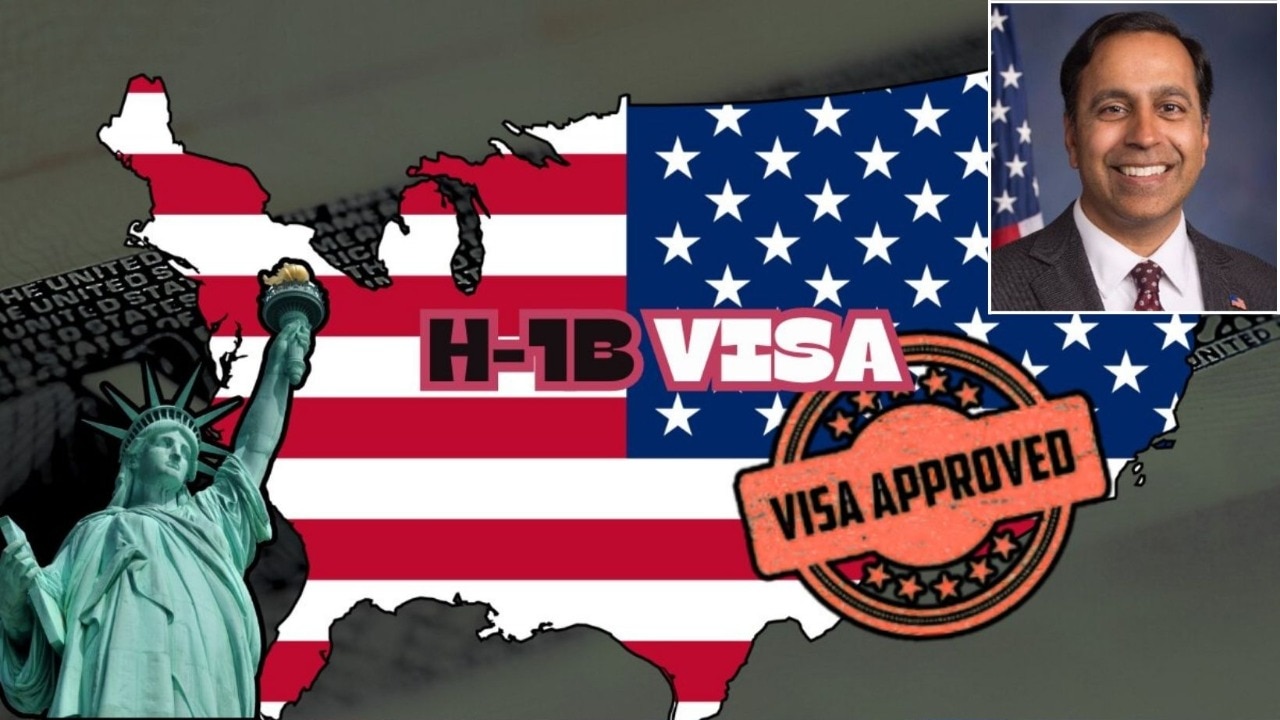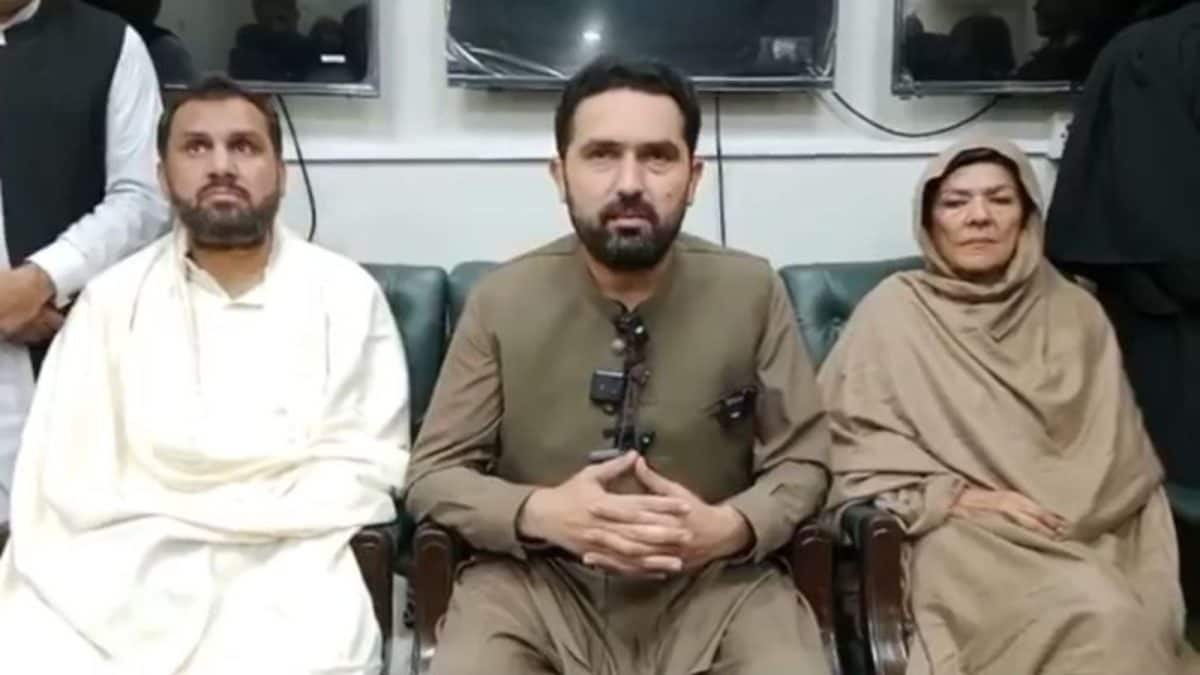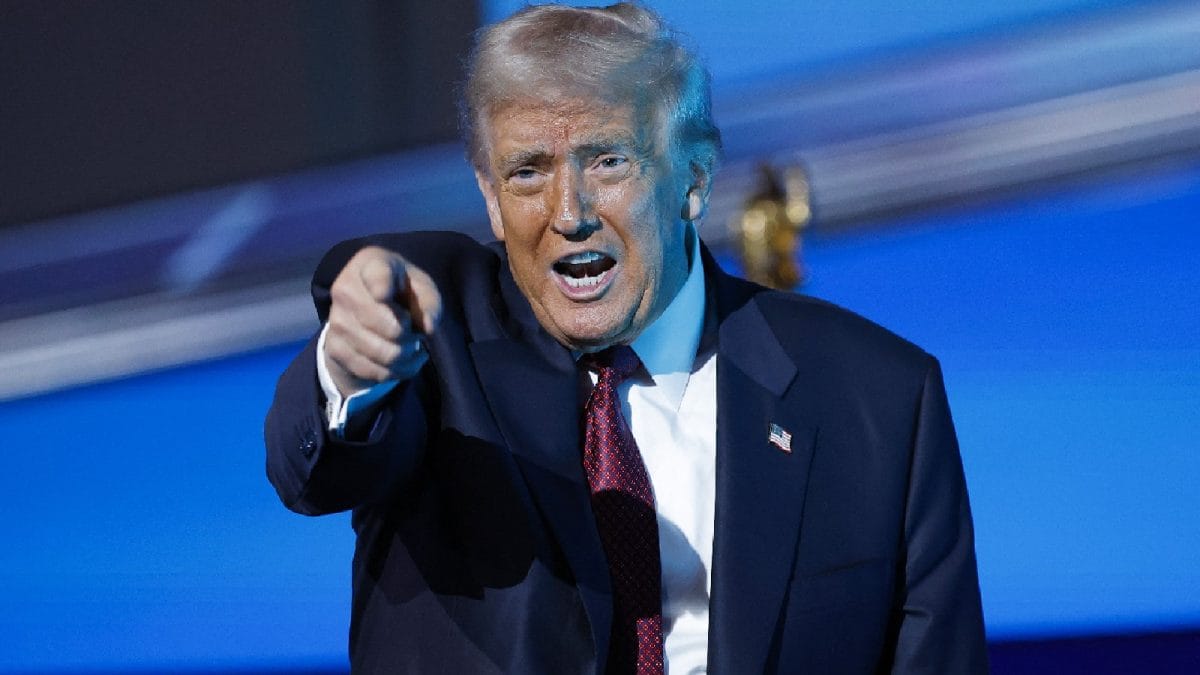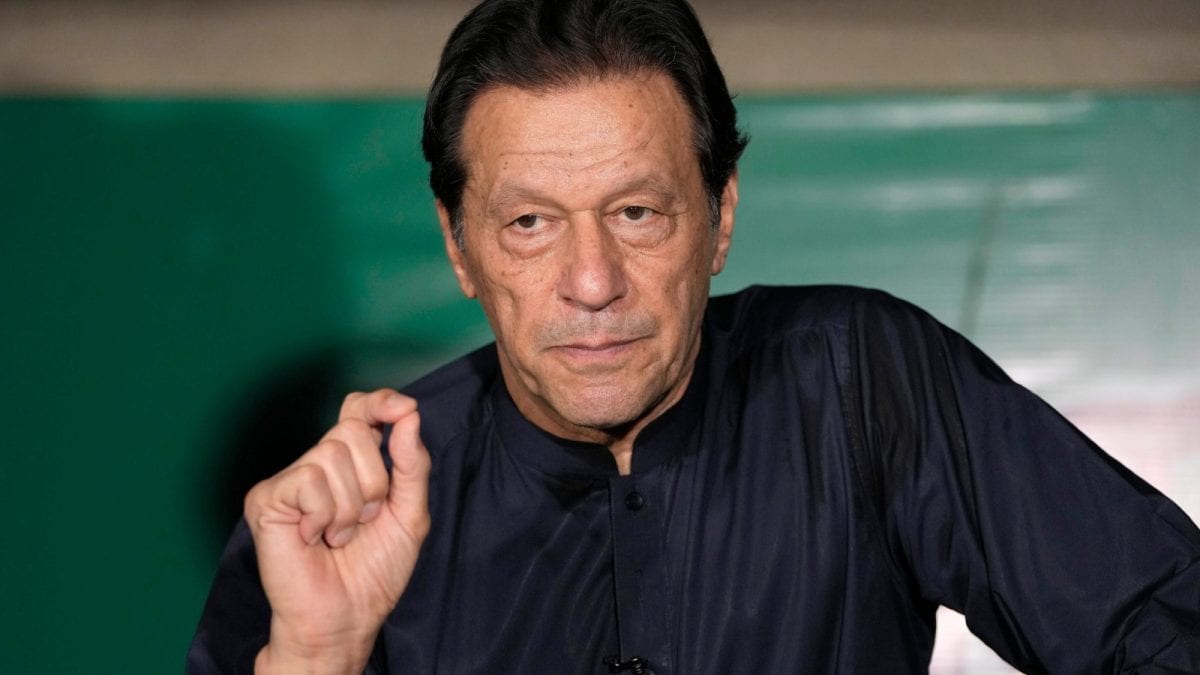Last Updated:November 28, 2025, 14:58 IST
By linking DC shooting to what he calls 'Biden illegal admissions', Trump is pushing his most sweeping immigration crackdown, rooted in themes he has pushed since his first term.

In the wake of the shooting near the White House, US President Donald Trump announced a sweeping new immigration push, declaring that the United States would “permanently pause migration” from what he termed “Third World Countries.” (Image: REUTERS)
US President Donald Trump has escalated his long-running war on immigration with one of his most sweeping promises yet: to “permanently pause migration from all Third World countries" and to launch what he calls “reverse migration" to “fully cure" America’s problems.
The timing is not accidental. His latest Truth Social screed landed just after an Afghan national allegedly ambushed two Guard members near the White House, killing 20-year-old Specialist Sarah Beckstrom and critically injuring another trooper.
Trump blamed the attack on what he describes as Biden-era vetting failures and ordered sweeping reviews of asylum approvals, refugee admissions and Green Cards for nationals from countries his administration now labels “of concern".
Now, he is using that to sell a much bigger project: not just slowing migration, but actively trying to push it into reverse.
What Did Trump Announce This Time?
In a long Thanksgiving post, Trump claimed US technological progress had been undermined by immigration policy and outlined a set of hardline pledges that go well beyond border control.
He vowed to “permanently pause migration from all Third World Countries", without defining the term or explaining how such a pause would operate under US immigration law. But the political message is clear: he wants a near-total shutdown of new arrivals from most of the developing world.
Second, Trump vowed to “terminate all of the millions of Biden illegal admissions, including those signed by Sleepy Joe Biden’s Autopen". In plain language, he is seeking to delegitimise and, where possible, rescind immigration decisions taken under former President Joe Biden, from asylum grants and humanitarian parole to other forms of legal pathways that conservatives have long attacked as “loopholes".
Third, he pledged to “remove anyone who is not a net asset", end all federal benefits for non-citizens, denaturalise those he believes undermine “domestic tranquillity", and deport foreign nationals he labels public charges, security risks or “non-compatible with Western Civilization".
These are political descriptions, not legal standards, but they indicate the direction in which he wants the system to move.
He capped the message with a threat and a flourish: “Only REVERSE MIGRATION can fully cure this situation… HAPPY THANKSGIVING TO ALL, except those that hate, steal, murder, and destroy everything that America stands for — You won’t be here for long!"
What Does Trump Mean By ‘Reverse Migration’?
“Reverse migration" has no legal definition. Trump uses it to frame a two-part project: undoing large segments of the Biden-era migration and restricting future inflows from much of the developing world.
At the immediate level, Trump is signalling an effort to reopen and potentially roll back Biden-era admissions and legal statuses. He has framed these decisions as improperly approved, and the actions already in motion reflect that view: an indefinite freeze on Afghan immigration cases, a full re-examination of Green Cards issued to nationals from 19 “countries of concern", and a sweeping review of every asylum approval granted since 2021.
Together, these steps point to a systematic attempt to revisit, reassess and, where possible, overturn the legal pathways through which tens of thousands of migrants were admitted during the last four years.
But Trump is also laying the groundwork for a long-term net reduction in migration, especially from what he terms “Third World countries". His proposed “permanent pause", expanded grounds for deportation and the possibility of denaturalising individuals deemed incompatible with “domestic tranquillity" or “Western civilisation" all feed into a strategy aimed at ensuring fewer people enter and more people leave.
Combined with Trump’s decision to set the 2026 refugee admissions cap at just 7,500 — the lowest in US history — and with tightened ideological screening, the approach signals a broader effort to reshape the long-term composition of America’s immigrant population by narrowing pathways traditionally used by migrants from Asia, Africa and Latin America.
How Did The DC Guard Shooting Become The Trigger?
The immediate backdrop is a shocking attack just a stone’s throw from the White House.
On the eve of Thanksgiving, two members of the Guard on duty in central Washington were shot in what officials describe as an ambush-style assault. The suspect, 29-year-old Afghan national Rahmanullah Lakanwal, had previously worked with CIA-backed units in Afghanistan and later reached the US through a post-withdrawal resettlement route: Operation Allies Welcome, the Biden-era evacuation programme established after Kabul’s fall in 2021.
Within hours, the fallout moved from crime scene to politics. The FBI said it was investigating the shooting as a potential act of terrorism. Trump, in an address to the nation, directly blamed “Biden-era vetting failures", even though the suspect reportedly received asylum under the current Trump administration earlier this year.
The policy response was immediate and sweeping. US Citizenship and Immigration Services (USCIS) announced an indefinite halt on “all immigration requests relating to Afghan nationals", saying the pause would remain until security and vetting protocols were re-examined.
How Does This Fit Into Trump’s Long-Running Immigration Ideology?
While the language is new, the themes are not. From his first presidential campaign in 2016, Trump has framed immigration primarily as a threat — to jobs, culture and public safety — and has promised to slash both legal and illegal entries.
In his first term, he signed the so-called “Muslim ban", a series of executive orders restricting entry and refugee resettlement from several Muslim-majority countries. These measures temporarily halted refugee admissions, barred Syrians indefinitely and subjected nationals from multiple Middle Eastern and African states to sweeping travel restrictions, before being revised and partially upheld by the US Supreme Court after legal challenges.
His administration also implemented the “zero tolerance" policy at the southern border, which led to thousands of children being separated from their parents as adults were prosecuted for illegal entry. It tightened asylum rules, making it far harder for people fleeing gang or domestic violence to qualify, and forced many Central American asylum seekers to wait in Mexico while their claims were processed.
On the legal immigration side, the Trump administration tried to expand the “public charge" rule, a long-standing test used to deny Green Cards to applicants deemed likely to depend on government support. Trump’s version dramatically widened that definition, allowing officials to count the use of non-cash benefits such as Medicaid, food assistance or housing support, and to weigh factors like income, education and credit history to judge whether someone might rely on public aid in future. Critics said it amounted to a “wealth test" for immigrants, and the policy triggered a wave of lawsuits before eventually being rolled back in court.
His second term has amplified these themes: broader travel bans, aggressive visa revocations, a drastically reduced refugee resettlement programme and the cancellation of Temporary Protected Status for several nationalities.
What Biden-Era Immigration Policies Is Trump Targeting?
Biden’s presidency marked a deliberate shift away from the restrictive framework of the Trump years. He ended the original travel bans, restored refugee admissions to a higher ceiling, dismantled the earlier public-charge rule, and expanded humanitarian parole routes for Afghans, Ukrainians, Venezuelans, Haitians and others fleeing conflict or instability. His administration also attempted to speed up asylum processing and reduce backlogs.
A central feature of Biden’s term was Operation Allies Welcome, which brought tens of thousands of Afghans to the US after the fall of Kabul. Lakanwal, the suspect in the DC attack, arrived through this very programme, turning OAW into a direct political flashpoint.
Trump now labels much of this as “Biden illegal admissions".
Officials have already confirmed that all asylum cases approved in the Biden years are being re-checked and that permanent residency for roughly 233,000 refugees admitted during that period has been frozen pending review. USCIS has also halted all new Afghan-related applications entirely.
Additionally, since January, the Trump administration has revoked roughly 80,000 non-immigrant visas for offences ranging from DUI to assault and theft, alongside heightened scrutiny of social media behaviour and political expression.
Could A ‘Permanent Pause’ And ‘Reverse Migration’ Really Be Implemented?
Legally, US presidents do have considerable power to restrict entry. Section 212(f) of the Immigration and ity Act allows them to suspend the entry of “any aliens or any class of aliens" if deemed detrimental to US interests. This was the basis for Trump’s earlier travel bans.
However, sweeping bans have repeatedly run into court challenges. Judges have blocked or narrowed several of Trump’s second-term attempts to restrict refugee admissions and apply travel bans inconsistently.
Denaturalisation for ideological reasons is even more difficult. US courts have ruled that citizenship cannot be revoked merely for unpopular views or political beliefs. Trump’s language about removing citizenship from those who undermine “domestic tranquillity" or are incompatible with “Western civilisation" would almost certainly face constitutional challenges.
A “permanent pause" on immigration from vast parts of the developing world would also collide with decades of practice in family-based migration, employment visas and humanitarian resettlement. Business groups, universities and even some Republican lawmakers have expressed concern that such measures could damage the US economy and competitiveness.
Trump can harden immigration enforcement, and he already has, but turning “reverse migration" into a durable legal framework would face substantial political and constitutional obstacles.
Why This Matters Far Beyond America
For millions across Asia, Africa and Latin America, the United States remains a crucial destination for education, work and refuge. Trump’s vow to freeze migration and to reopen decisions made under Biden signals that even individuals who arrived legally and have built lives in the US could find their status unsettled by shifting political winds.
The DC shooting may have provided the spark, but the programme Trump is outlining is far bigger — a plan to reshape who gets to come to America, who gets to stay, and who America ultimately belongs to.

Karishma Jain, Chief Sub Editor at News18.com, writes and edits opinion pieces on a variety of subjects, including Indian politics and policy, culture and the arts, technology and social change. Follow her @kar...Read More
Karishma Jain, Chief Sub Editor at News18.com, writes and edits opinion pieces on a variety of subjects, including Indian politics and policy, culture and the arts, technology and social change. Follow her @kar...
Read More
First Published:
November 28, 2025, 14:45 IST
News explainers Why Trump’s ‘Reverse Migration’ Push Is The Expansion Of A Project Years In The Making
Disclaimer: Comments reflect users’ views, not News18’s. Please keep discussions respectful and constructive. Abusive, defamatory, or illegal comments will be removed. News18 may disable any comment at its discretion. By posting, you agree to our Terms of Use and Privacy Policy.
Read More

 44 minutes ago
44 minutes ago
